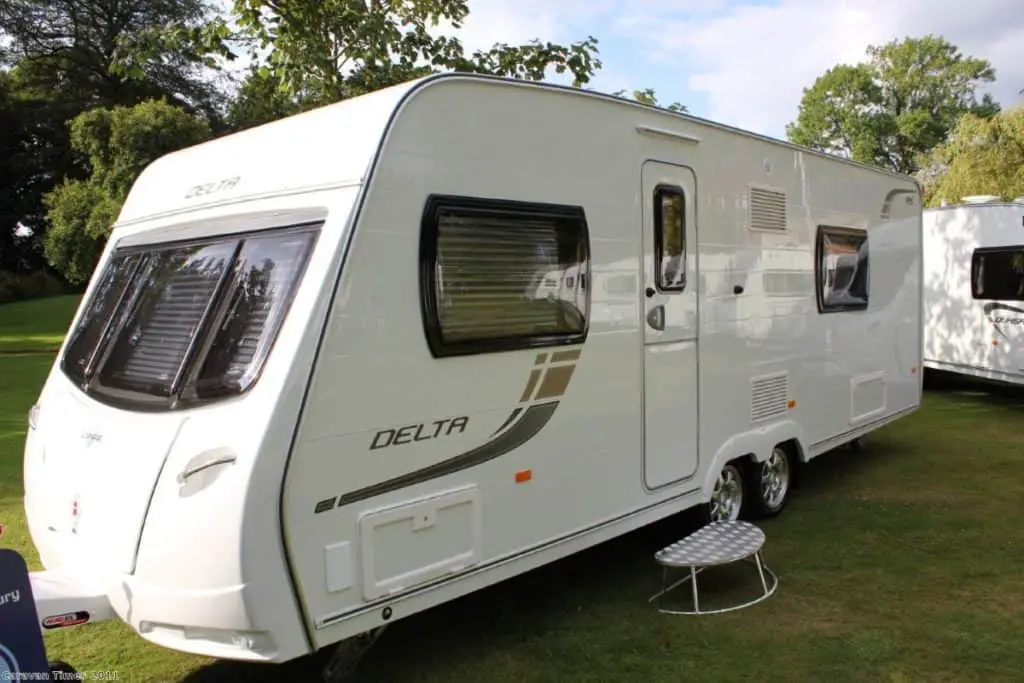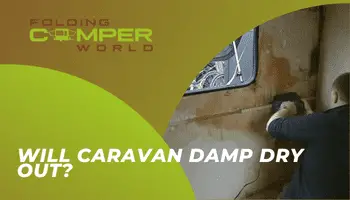Due to their construction materials and the fact that they spend most of their life outdoors, caravans are prone to damp, water ingress, and mould. This can be pretty damaging if you live in a country where the weather is wet for most of the year. Exposure to this weather for extended periods can result in leakages and damaged sealants around the caravan. For many older caravans with wooden construction, putting them into storage during the colder months may also be a pointless resolution, as some people find their caravans to be still affected by damp and other mould issues when they take them out of storage again.
If your caravan is affected by damp, you can always try to dry it out. If the damp issues in your caravan are pretty minimal, this is an effective way to fix the issue, and although it may return, you should keep an eye on this. However, if you have a lot of dampness around your caravan, simply drying out your caravan may not make a difference. In this case, you should book your caravan in for a damp repair at your local dealership or service station. If you have a warranty with your caravan, then it may be possible to get this done for free. This blog post will look at drying out your caravan in more detail and give you more information about damp repairs.
This blog post will look at the following:
What is caravan damp?

Damp is the result of an increase in moisture within the air. It can be seen in houses as well as in caravans. The cause of damp is usually either condensation in your caravan or water ingress because of a leak in your caravan. If your caravan has damp inside, it is crucial to figure out which of these two processes has caused the damp, as this will allow you to find an appropriate fix to the issue. This may involve taking steps to reduce the amount of condensation build-up in your caravan or fixing a leak in your caravan. The sections below explain what condensation and water ingress are.
Condensation
This is the natural process that occurs when your caravan’s moisture content and temperature change. When the temperature falls, the moisture in the air condenses, which can be seen on the colder surfaces of your caravan, such as the windows. This makes the surfaces feel cold and wet. If left on the surface for an extended time, you will see black mould growing, which is damp. The condensation itself is not what causes the structural damage to your caravan, but the effect of the damp is what can cause these issues. It’s also important to note that damp can affect your respiratory health. The spores released by the black mould during the fungi’s reproduction cycle can irritate the lungs when inhaled.
Water ingress
If you find that your caravan has water ingress issues, it’s important to figure out where the water is coming from and get it fixed as soon as possible. In the meantime, you should ensure that you get your caravan under a cover. You should use a breathable and waterproof caravan cover, or the more recommended temporary solution is to keep it in storage where it will be kept out of the wet weather completely.
Drying out your caravan

As mentioned previously, It is possible to dry out your caravan. However, if the damp in your caravan results from water ingress, it’s important to fix this first. I asked online forum users on Practical Caravan if it is possible to dry out your caravan and, if so, how? All of the responses I received made it clear that it is possible to dry out a caravan. User ‘RogerL’ explains that “It’ll only dry out if the leak has been fixed properly.” Suppose you attempt to dry out your caravan before fixing the root issue. The drying process will not work as the water ingress, or the condensation issue will still occur, causing the damp to grow further rather than draw out the moisture from your caravan to prevent the damp. Here are some relatively simple yet effective ways to dry out your caravan once the root issue has been fixed.
Use absorbent material underneath the carpet
For many caravan users, damp seems to be at its worst on their carpet. To fix this issue, it is highly recommended to buy some absorbent material available from a range of camping stores and stick this underneath your carpet to absorb all the moisture. To do this, you much ensure all the furniture has been removed from the caravan, and then use a high-pressure cleaner to clean the walls and the floor thoroughly. Then ensure that the caravan is fully dry before using carpet glue to stick down the absorbent material. You should allow around 48 hours for this to dry before placing the carpet back over the absorbent material and bringing all the furniture back inside.
Use a dehumidifier
Dehumidifiers can be great for drying out your caravan as they help protect against mould before bringing the moisture down to a safe level. You should be aware that they need to be placed on a non-inflammable surface such as wood or other insulating materials. You shouldn’t place the dehumidifier above any electrical appliances such as ovens or storage heaters, as this may increase the risk of a fire breaking out. Some people have also suggested avoiding placing it near any windows or vents where it can get too cold.
Replace rotten interior wallboards
This is one of the most suggested methods on the Caravan Talk online forums, with user ‘Brecon’ saying:
“Remove the interior wallboards, remove any affected insulation and rotten wood and replace with new. Internal wallboards are covered in a foil laminate which is waterproof, the outer skin of the van is also waterproof, so when water gets in, it cannot get out without removal as stated.”
Use bowls or buckets of salt
One of the most straightforward ways to draw out moisture from a caravan is to place bowls or buckets full of salt in your caravan. According to the replies on Caravan Talk, doing this will help to absorb moisture in the air and decrease dampness.
Damp repairs

In some cases, attempts to dry out the caravan fail repeatedly. This is because the damage caused by the damp may be too much to be solved by simply drying out the caravan. In this case, you should consider getting a damp repair. If you notice damp in your caravan, it’s imperative to remove the source of damp immediately, as it is quite a small space. If it has been left too long, damp and mould will damage the caravan and could even have serious health implications. It’s also important to remember that while it might appear like there is only a small damp spot in your caravan, there could be a lot more lurking behind the panels, which may be the reason why attempting to dry out your caravan seems to fail. This is why damp repairs are essential to ensure your caravan is kept in good condition.
When you book your caravan in for a damp repair at your local dealership or service station, you’ll be asked to bring your caravan in for an assessment so they can identify the extent of any damage. After your caravan has been examined, you’ll get a quote, and you will be allowed time to think about whether or not you would like to go ahead with the repair. If you do go ahead with the repair, they may be times when they need to remove the sides, back or even the roof of your caravan. This is why it’s essential to go to a dealership or a service station you completely trust, as they will carry out the repairs while ensuring your safety and the long-term integrity of your caravan.
Although damp repairs are a necessity for many caravans, the ing that prevents a lot of caravan owners from booking their caravan in for one is the cost. According to Check a Trade, “On average, a tradesperson will charge between £50 – £75 per hour for damp repair. So, when budgeting for the repair, you’ll need to consider the extent of the damage in the caravan. In most cases, repairs of this nature take between two-three hours to complete.” This means that the more damaged your caravan is, the more expensive it will be to repair. Therefore, repairing it sooner is the best option as it means you won’t have to pay more once the damp worsens.
Conclusion
If your caravan has damp in it, it’s essential to take the necessary steps right away. If you act as soon as you notice it, the chances are you can remove the damp by simply drying out your caravan using the methods recommended in this blog post. However, if you ignore the issue, it will only worsen over time and can result in you paying a lot of money to get it fixed.


